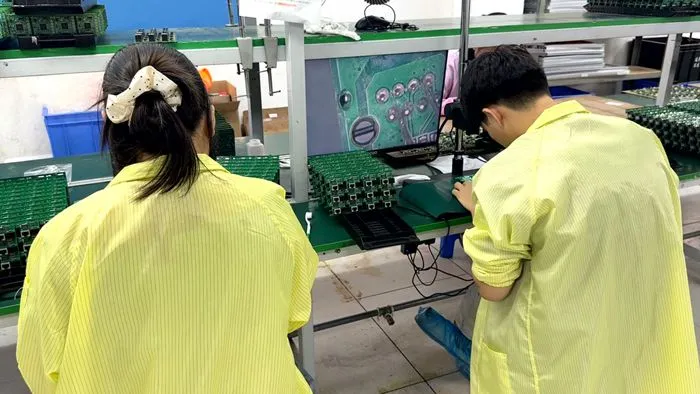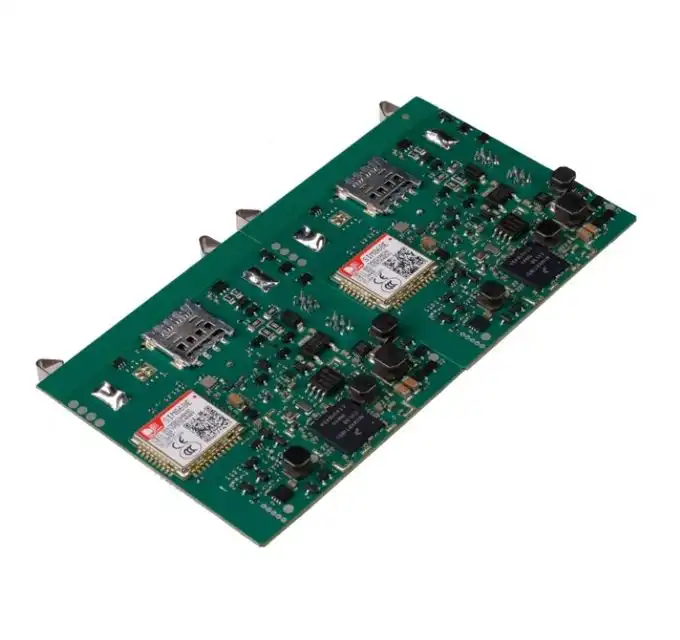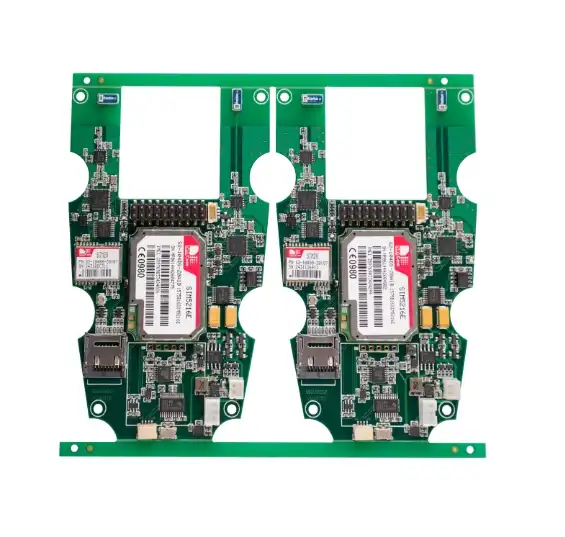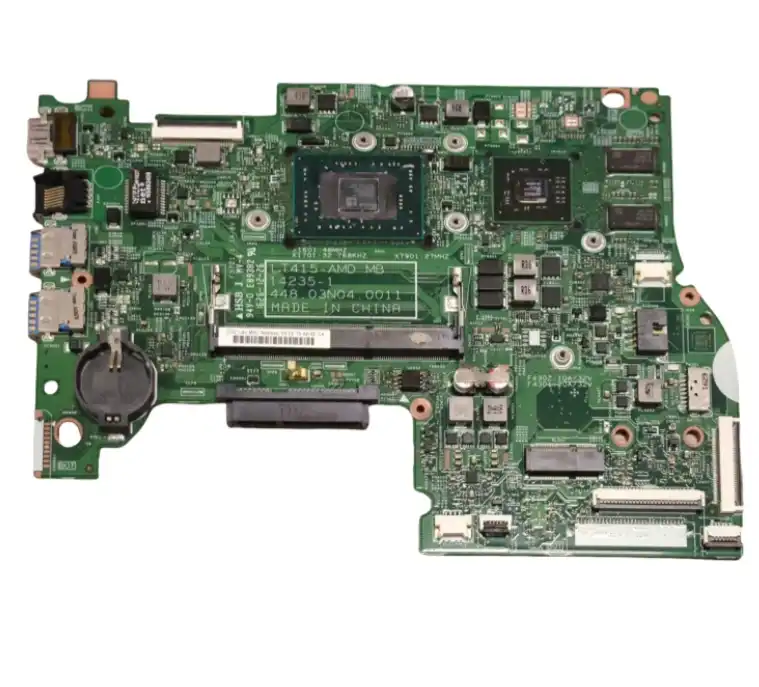The Evolution of PCB Assembly Techniques
The journey of PCB assembly has been marked by continuous innovation and technological advancements. In the early days of electronics manufacturing, PCB assembly was predominantly a manual process, requiring skilled technicians to place and solder components by hand. This method, while effective for small-scale production, was time-consuming, prone to errors, and limited in its ability to handle complex designs.
As the demand for electronic devices grew exponentially, manufacturers sought more efficient and reliable assembly methods. This led to the development of semi-automated systems, which introduced mechanized processes for component placement and soldering. These early automated systems represented a significant leap forward, improving both speed and accuracy.
The Rise of Surface Mount Technology
The introduction of Surface Mount Technology (SMT) in the 1980s marked a pivotal moment in PCB assembly. SMT allowed for smaller components to be placed directly onto the surface of the PCB, rather than through holes, paving the way for more compact and complex electronic designs. This technology was particularly well-suited for automation, as it simplified the component placement process and allowed for higher density boards.

Advancements in Automated Assembly Equipment
The evolution of automated PCB assembly equipment has been rapid and transformative. Modern pick-and-place machines can place tens of thousands of components per hour with micron-level accuracy. Reflow ovens have become more precise in their temperature control, ensuring optimal soldering conditions for a wide range of components. Automated optical inspection (AOI) systems have also evolved, using advanced algorithms and high-resolution cameras to detect defects that would be invisible to the human eye.
These technological advancements have not only increased the speed and accuracy of PCB assembly but have also enabled manufacturers to produce increasingly complex and miniaturized electronic devices. The ability to consistently assemble boards with hundreds or even thousands of components has been instrumental in the development of smartphones, wearable devices, and other cutting-edge electronics.
Key Components of Automated PCB Assembly Systems
Automated PCB Assembly systems are composed of several sophisticated machines and processes working in harmony to produce high-quality circuit boards efficiently. Understanding these key components is essential for appreciating the complexity and capabilities of modern PCB manufacturing.
Pick-and-Place Machines
At the heart of automated PCB assembly are pick-and-place machines. These marvels of engineering use robotic arms equipped with vacuum nozzles to accurately pick up components from reels or trays and place them onto precise locations on the PCB. Advanced models can handle components as small as 0201 (0.6 mm × 0.3 mm) or even 01005 (0.4 mm × 0.2 mm) with remarkable speed and precision.
Modern pick-and-place machines often incorporate vision systems that can recognize component polarity and orientation, ensuring correct placement. They can also adjust for slight variations in component size or PCB warpage, maintaining accuracy across large production runs.
Solder Paste Printing
Before components are placed, solder paste must be applied to the PCB. Automated solder paste printers use a stencil and squeegee system to deposit precise amounts of solder paste onto the board's pads. The accuracy of this step is crucial, as too much or too little solder can lead to defects in the final product.
Advanced solder paste printers incorporate features such as automatic stencil cleaning, closed-loop pressure control, and 3D inspection of the deposited solder paste to ensure consistency and quality.
Reflow Ovens
After component placement, the PCBs pass through reflow ovens. These sophisticated heating systems melt the solder paste, creating permanent connections between the components and the board. Modern reflow ovens use multiple heating zones with precise temperature control to create an optimal thermal profile for each board design.
Many reflow ovens now incorporate nitrogen atmospheres to reduce oxidation and improve solder joint quality. Some advanced systems also feature cooling zones to control the rate at which the solder solidifies, further enhancing joint reliability.
Automated Optical Inspection (AOI)
Quality control is an integral part of automated PCB assembly. AOI systems use high-resolution cameras and sophisticated image processing algorithms to inspect boards for defects such as missing components, incorrect placements, or solder joint issues. These systems can inspect hundreds of solder joints per second, providing rapid feedback on assembly quality.
Modern AOI systems often incorporate artificial intelligence and machine learning algorithms to improve defect detection and reduce false positives over time. Some advanced systems can even automatically adjust assembly parameters based on inspection results, creating a closed-loop quality control process.
Benefits and Challenges of Automated PCB Assembly
The adoption of automated PCB assembly has brought numerous benefits to the electronics manufacturing industry, but it also presents certain challenges that manufacturers must navigate. Understanding both the advantages and potential obstacles is crucial for organizations looking to implement or optimize their automated assembly processes.
Benefits of Automation in PCB Assembly
Automated PCB assembly offers several significant advantages over manual or semi-automated processes:
- Increased Productivity: Automated systems can operate continuously at high speeds, dramatically increasing production output. A single automated line can often match the output of multiple manual assembly lines, allowing manufacturers to meet high-volume demands efficiently.
- Improved Accuracy and Consistency: Automated systems can place components with micron-level precision, far exceeding human capabilities. This accuracy is maintained consistently across large production runs, reducing variability and improving overall product quality.
- Cost Reduction: While the initial investment in automated equipment can be substantial, the long-term cost savings are significant. Reduced labor costs, fewer errors, and less material waste contribute to lower per-unit production costs.
- Handling of Complex Designs: Modern automated systems can handle extremely complex PCB designs with thousands of components, including ultra-small or oddly shaped parts that would be challenging to place manually.
- Enhanced Traceability: Many automated systems incorporate advanced tracking features, allowing manufacturers to maintain detailed records of each board's assembly process. This traceability is invaluable for quality control and compliance with industry standards.
Challenges in Implementing Automated PCB Assembly
Despite its many benefits, automated PCB assembly also presents certain challenges:
- High Initial Investment: The cost of purchasing and installing automated assembly equipment can be substantial, potentially presenting a barrier for smaller manufacturers or those with limited capital.
- Complexity of Setup and Programming: Configuring automated systems for new board designs can be complex and time-consuming. It requires skilled technicians who understand both the equipment and the PCB design process.
- Maintenance and Downtime: Automated systems require regular maintenance to ensure optimal performance. When issues do occur, the resulting downtime can be costly, especially in high-volume production environments.
- Flexibility Limitations: While modern systems are increasingly versatile, they may still struggle with certain unconventional components or board designs. Very low-volume or highly customized productions may not always be cost-effective on fully automated lines.
- Skill Gap: The transition to automated assembly requires a workforce with different skills. Companies may need to invest in training existing employees or hiring new staff with expertise in operating and maintaining automated systems.
Despite these challenges, the benefits of automated PCB assembly often outweigh the drawbacks for many manufacturers. As technology continues to advance, we can expect to see further improvements in the flexibility, efficiency, and accessibility of automated assembly systems, making them an increasingly attractive option for a wider range of electronics manufacturers.
Conclusion
Automated PCB Assembly has become an indispensable technology in modern electronics manufacturing, offering unparalleled efficiency, precision, and consistency. As the demand for complex, high-quality electronic devices continues to grow, the role of automation in PCB assembly will only become more crucial. Manufacturers and PCB assembly suppliers must stay abreast of the latest advancements in automation technology to remain competitive in this rapidly evolving industry.
For businesses seeking reliable PCB assembly solutions, partnering with experienced PCB manufacturers who leverage cutting-edge automated assembly systems is essential. These partnerships can provide access to state-of-the-art technology and expertise, enabling companies to produce high-quality electronic products efficiently and cost-effectively.
FAQ
What is the main advantage of automated PCB assembly?
The main advantage is increased productivity and accuracy, allowing for high-volume production of complex PCBs with consistent quality.
How does automated PCB assembly impact product quality?
It significantly improves quality by reducing human error and maintaining precise component placement and soldering across large production runs.
Is automated PCB assembly suitable for all types of PCB production?
While highly efficient for medium to high-volume production, it may not be cost-effective for very low-volume or highly customized PCBs.
Expert PCB Assembly Services | Ring PCB
Ring PCB leverages advanced automated PCB assembly technologies to deliver high-quality, cost-effective solutions for electronics manufacturers. With over 500 professionals and state-of-the-art facilities, our factory offers comprehensive PCB and PCBA services, from design to final assembly. As a leading PCB assembly supplier and manufacturer, we ensure precision, reliability, and timely delivery for projects of all scales. Contact us at [email protected] to explore how our expertise can elevate your electronic product manufacturing.
References
1. Johnson, A. (2022). "Advancements in Automated PCB Assembly Technologies". Journal of Electronics Manufacturing, 45(3), 112-128.
2. Smith, B. & Lee, C. (2021). "Impact of Automation on PCB Assembly Quality and Efficiency". International Conference on Electronics Production and Assembly, 78-92.
3. Zhang, Y. (2023). "Challenges and Solutions in Implementing Automated PCB Assembly Systems". Electronics Manufacturing Technology Symposium, 201-215.
4. Brown, R. (2022). "The Evolution of Pick-and-Place Technologies in PCB Assembly". Robotics and Automation in Electronics, 33(2), 45-60.
5. Garcia, M. & Patel, K. (2023). "Cost-Benefit Analysis of Automated vs. Manual PCB Assembly Processes". Journal of Manufacturing Economics, 56(4), 332-348.





